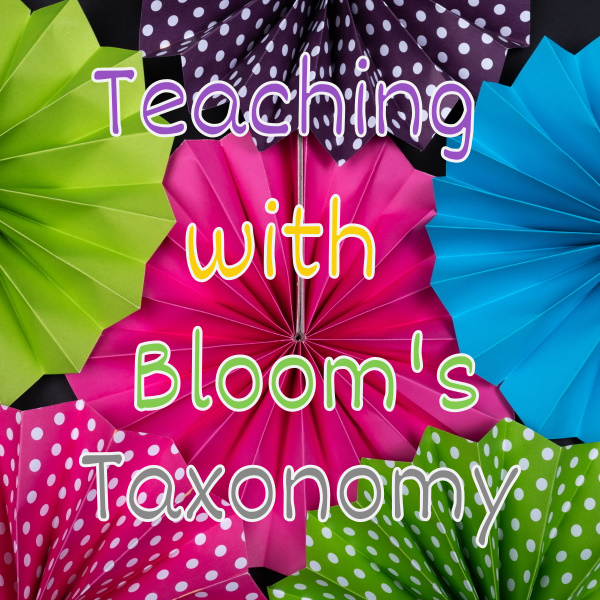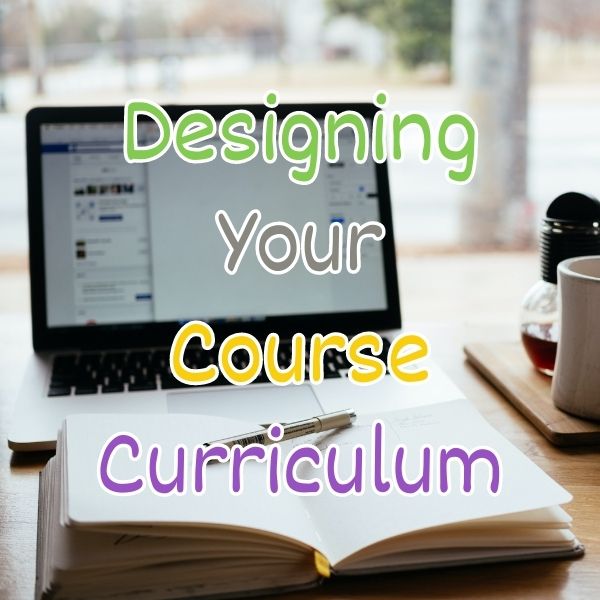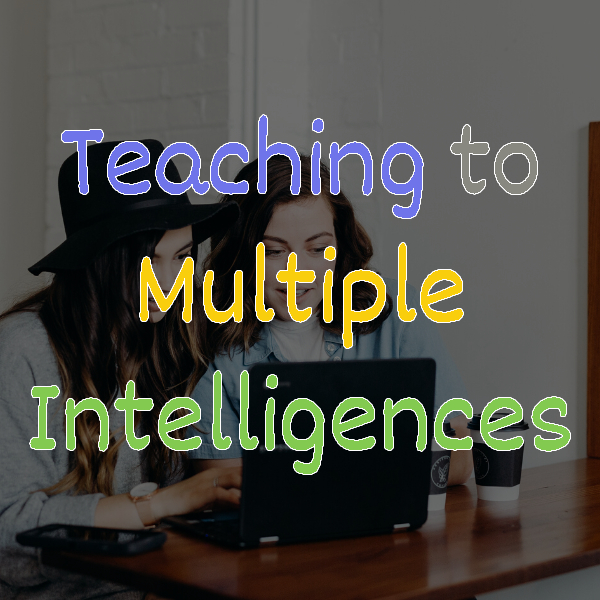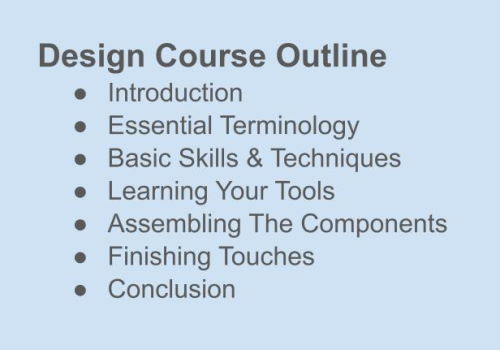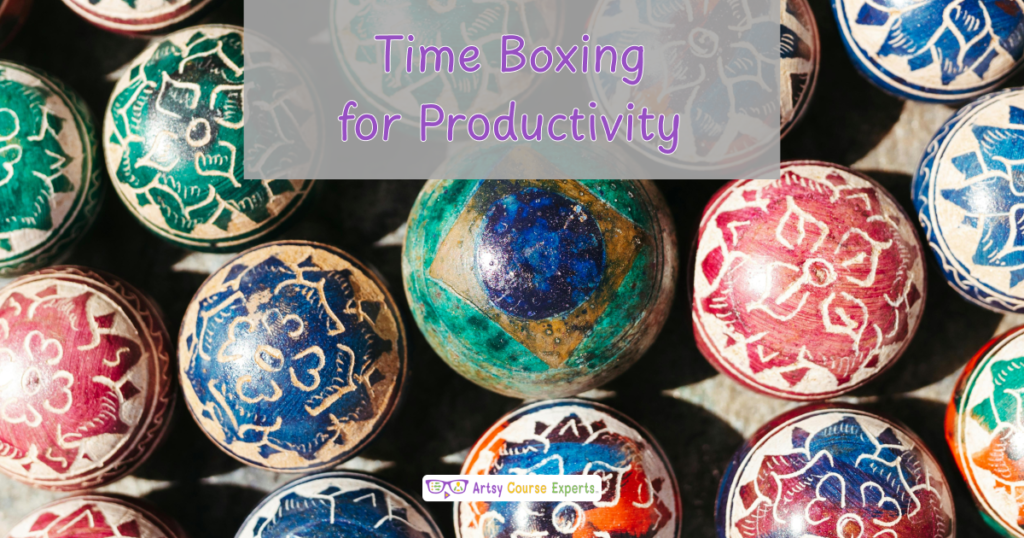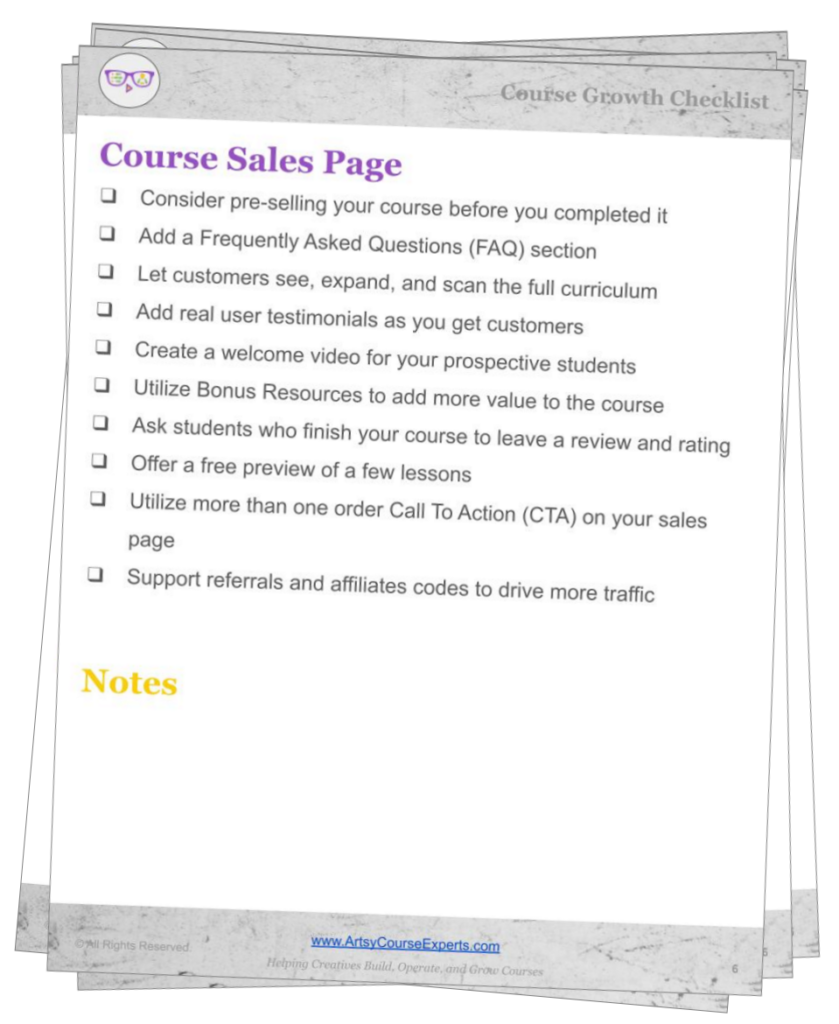Introduction
Getting started with your first creative course can feel overwhelming. There are a lot of moving pieces, and it can be frustrating trying to keep track of them all. Add that to the fact that some of us aren’t teachers by trade, and you’ve got a recipe for disaster.
Luckily, the educators that came before us have already carved out the tricks of the trade when it comes to creating quality courses. There are several theories, formats, and templates that can help new and experienced teachers create courses that any learner would want to take.
A framework is an established set of steps or standards teachers can use during course development. Using established frameworks makes your course more credible, professional, and aligned with general teaching standards. After all, everyone has taken a course before, whether in high school or the workplace, which means they know how a course is supposed to flow.
The framework we’ll explore in this section is called Bloom’s Taxonomy. Let’s learn more about it and how it can help you create an amazing online course for creators!
What is Bloom’s Taxonomy?
Bloom’s Taxonomy is a concept created By Benjamin Bloom in 1956. Essentially, it is a hierarchy of learning functions primarily used by K-12 teachers and college professors.
When taking a course, teachers will ask students to demonstrate what they’ve learned. This can be done in many ways, such as quizzing, discussion boards, or reports. Using more modern technology, they can also do this through voice recording, YouTube videos, or various apps on our mobile devices. In today’s educational environment, students can tap into their creativity to show what they’ve learned and how they’ve learned it.
What Bloom tells us is that there’s a hierarchy when it comes to these learning demonstrations—they are not equal! Just think about it. As a teacher, can you assess a student’s knowledge of makeup application techniques through a multiple-choice quiz? Perhaps.
Now, can you assess it better if you ask your student to record themselves applying makeup to a mannequin? Definitely!
All learning is good learning, but as creative teachers and experts, we must remember to keep the learning balanced by having a good mixture of assignments and assessments that challenge our students’ understanding of the course topic. This is where Bloom’s Taxonomy steps in.
Bloom’s consists of 6 categories. The categories in order are:
- Remember (Most Basic Stage)
- Understand
- Apply
- Analyze
- Evaluate
- Create (Most Advanced Stage)
The categories are listed from the most basic (“remember”) to the most advanced (“create”) to demonstrate how a good course should have a range of content that stretches the learner using multiple techniques. The framework also demonstrates the need to have mixed assignments that fully test the learner’s knowledge.
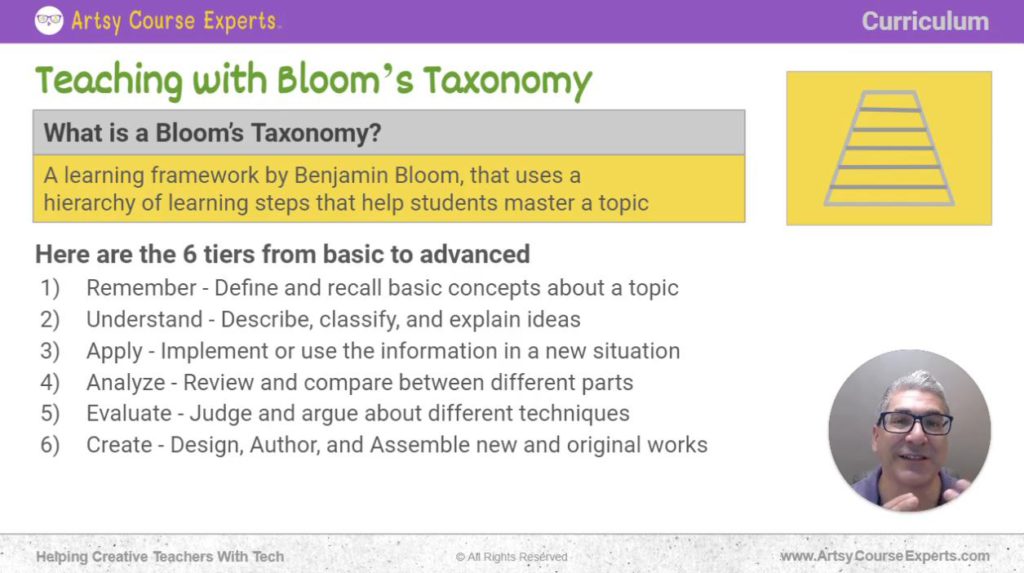
Why Should Creative Teachers Use Bloom’s Taxonomy?
Educational professionals have used Bloom’s Taxonomy for years, and for a good reason. This framework helps teachers to create, structure, and organize their courses in a way that challenges their students and helps them to make meaningful learning connections.
Although it is primarily used in a formal setting, Bloom’s Taxonomy is also an important tool for any creative teacher. Let’s look at why you should be incorporating Bloom’s into your creative courses.
Using Bloom’s Taxonomy Will Keep You Organized
Let’s say you’re creating a course on the fundamentals of Ballet dancing. What’s more important—having a video library of ballet tutorials or allowing your students to actually practice ballet?
It’s very important to know the terms and concepts within a subject. For example, every ballet dancer should understand what an arabesque is. However, it’s equally important that they know how to do one!
Bloom ensures that students know the whys and the hows of any subject. In addition to the background information, they need practical, hands-on training that allows them to duplicate their skills outside the course.
Using the categories within Bloom’s Taxonomy ensures that the course content (discussion boards, reference material, assignments) allows them to do so.
Bloom’s Taxonomy Will Help You During Course Development
Bloom’s Taxonomy is the base of any good course. It takes much of the guesswork out of creating assignments.
In fact, there are many free or low-cost templates that are available to create lesson plans based on Bloom’s.
Using the framework as a guide, you can quickly create a professional, well-developed course that will help students feel confident in your teaching abilities.
Why Should Creative Teachers Use Bloom’s Taxonomy?
Educational professionals have used Bloom’s Taxonomy for years, and for a good reason. This framework helps teachers to create, structure, and organize their courses in a way that challenges their students and helps them to make meaningful learning connections.
Although it is primarily used in a formal setting, Bloom’s Taxonomy is also an important tool for any creative teacher. Let’s look at why you should be incorporating Bloom’s into your creative courses.
Using Bloom’s Taxonomy Will Keep You Organized
Let’s say you’re creating a course on the fundamentals of Ballet dancing. What’s more important—having a video library of ballet tutorials or allowing your students to actually practice ballet?
It’s very important to know the terms and concepts within a subject. For example, every ballet dancer should understand what an arabesque is. However, it’s equally important that they know how to do one!
Bloom ensures that students know the whys and the hows of any subject. In addition to the background information, they need practical, hands-on training that allows them to duplicate their skills outside the course.
Using the categories within Bloom’s Taxonomy ensures that the course content (discussion boards, reference material, assignments) allows them to do so.
Bloom’s Taxonomy Will Help You During Course Development
Bloom’s Taxonomy is the base of any good course. It takes much of the guesswork out of creating assignments.
In fact, there are many free or low-cost templates that are available to create lesson plans based on Bloom’s.
Using the framework as a guide, you can quickly create a professional, well-developed course that will help students feel confident in your teaching abilities.
How Do I Get Started Using Bloom’s Taxonomy?
Incorporating the taxonomy into your creative course is simple! Just follow the pyramid. Well, maybe it’s not that simple. Here are a few things that you want to consider first.
- The length of your course. The length of your course will help determine how many activities you’ll have. Whether it’s a few days or weeks, ensure that you have enough work for your students to feel engaged and not burnt out.
- The nature of your course. No matter the course topic, you’ll need to provide opportunities for your students to apply their skills and receive thorough feedback.
However, depending on whether your course is more physically engaging (dancing, singing) or more mentally engaging (painting, sewing), you’ll have to make sure that students have enough time to complete each assignment and that they aren’t overworking their bodies or minds (that’s where Bloom’s is most helpful!).
Now that you’ve done a little planning, let’s look at each category within the framework, along with some examples of how you can use them.
Remember
Remembering is the lowest tier of Bloom’s taxonomy. It emphasizes the ability to pull information from memory.
It’s the lowest on the pyramid because information can easily be forgotten, mainly if it’s not being used. Also, your students might just be guessing, giving them the false confidence of knowing the material.
Nevertheless, remembering is a key aspect of developing your course materials. Here are some examples of how you can help your students remember information:
- Create a set of digital flashcards using a tool like Quizlet to help your students recall information.
Example: One side of the flashcard could be an image of a ballet position, while the other side names the position.
- Create a multiple-choice quiz, which will give students a few hints.
Example: Photography students can identify the various parts of the camera by selecting the correct answer.
Understand
In addition to knowing the what, your students also need to know the whys and the hows. For example, knowing what kind of clasp is best for necklaces is good, but understanding why it’s the best is even better.
Your course should include activities that encourage students to demonstrate their understanding of various topics. This may look like:
- Using discussion boards to ask questions about key concepts, allowing students to craft their own responses while learning and sharing with their peers
Example: Ask your music students to define what makes a great song. Have them respond to at least 2 other classmates.
Example: Ask your voice students to submit a 3-minute voice recording of themselves singing a song.
Apply
Students should take existing knowledge and use it for themselves. The ability to apply terms and concepts helps build confidence and build muscle memory. Here’s how your creative students can apply their knowledge in realistic situations.
- Pair students up or place them in small groups to role-play different scenarios or observe
Example: One student can be an art customer while the other is an art shop owner.
- Encourage students to volunteer as virtual or in-person teachers to practice teaching their skills to others.
Example: Encourage students to volunteer as dance teachers at their local community center.
Analyze
Allowing students to express their interpretations of a subject is also important in helping them boost their confidence and solidify learning connections.
Analyzing lets them observe while applying newly learned information to what they’re experiencing. Analyzing can include:
- Having students review a product and try to deconstruct it.
Example: Ask jewelry students to examine some of their favorite pieces. What materials were used? How were they assembled?
- Have students watch an interview of their favorite creative and identify the techniques and concepts that they’ve learned in class.
Example: In your cooking class, ask students to watch an episode of Julia Child’s cooking show on YouTube. What cooking techniques did she use? Why did she use them? What alternatives could she have used?
Evaluate
Evaluating consists of observing and judging the quality of one’s work. Again, this builds self-confidence in the subject matter while teaching students how to measure and provide feedback. Some examples of including evaluation in your course are:
- Have students provide detailed feedback on their peer’s assignments
Example: Students could rate and provide feedback on each other’s pitch. Have them explain the reasoning behind their feedback.
- Have students pick their favorite technique and support their choice through a writing assignment
Example: Ask your drawing students, which tool is better—pencil or pen. Have them explain their choice, along with the benefits and disadvantages.
Create
Creating is the ultimate demonstration of what a student has learned. It’s a fun yet challenging way to incorporate self-expression with existing knowledge. Creating is the top tier of Bloom’s taxonomy because it also incorporates all the others. Encouraging your students through creation can look like this:
- Using all the techniques learned, have students create a final product.
Example: Pottery students could create a set of ceramic mugs.
- Have students demonstrate what they’ve learned.
Example: Have your writing students author an entire short story that has all the essential components of a story like setting, plot, conflict, and character development.
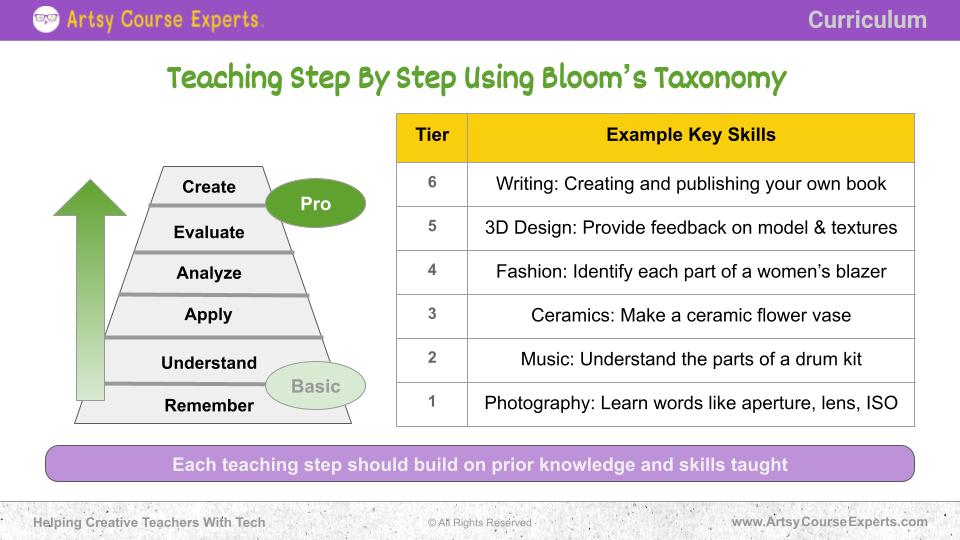
Frequently Asked Questions about Bloom’s Taxonomy for Creative Teachers

Summary – How to Use Bloom’s Taxonomy as a creative teacher
Bloom’s Taxonomy is a popular framework used by teachers and educators of all types, including creative online course teachers. It ensures that students can meet the learning objectives by demonstrating knowledge in various ways.
Bloom’s consists of six categories, which are arranged in tiers. The most basic tier is “remember,” and the most complex tier is “create.” When using Bloom’s, teachers can create assignments and projects that use each of these tiers to encourage dynamic learning.
Finally, using Bloom’s prevents boredom and being overwhelmed by encouraging teachers to create various challenging and fun assignments.
Here are a few final tips on using Bloom’s Taxonomy for your online course lessons:
- Start by explaining and defining the core words and components
- Check that your students understand and can explain your examples
- Go from passive digesting to active demonstrations in the applying phase
- Add more complex and multi-part problems in the later analyze stages
- Creatives should be able to compare and contrast in the evaluate stage
- Designing and developing creative works will demonstrate the broadest application of skills
Hopefully, this Bloom’s taxonomy tutorial has made you smarter in curriculum planning for your online courses, community, and teacher website.
For more creative teacher help building, operating, and growing your online courses, check out our ArtsyCourseExperts blog and subscribe to our email for regular tips.
More Tips For Online Teachers
These lessons can also help you with course planning, design, and growing:
- Finishing Your Online Course—When It’s Taking Too Long
- Using the ADDIE Model To Design Effective Online Courses
- Planning New Online Courses Using SWOT Analysis
- Checking The Quality of Your Online Course Lessons
- Help Students With End of Lesson Transitions
- Using Title Slides for Online Course Lessons
- Planning a Course Business with Ikigai
- Is It Easy For Students To Ask The Teacher Questions?
- Handling Student Buyer’s Remorse For Online Courses
- How To Create A Guide For Your Online Course?
Related Services For Teachers and Experts
We offer these services to help your course business with curriculum planning:
- Online Course Coaching
- Course Technology Maintenance
- Community Technology Maintenance
- Teacher Website Tech Maintenance
- Automate Your Student Operations
- Analyze Your Course Sales Page

